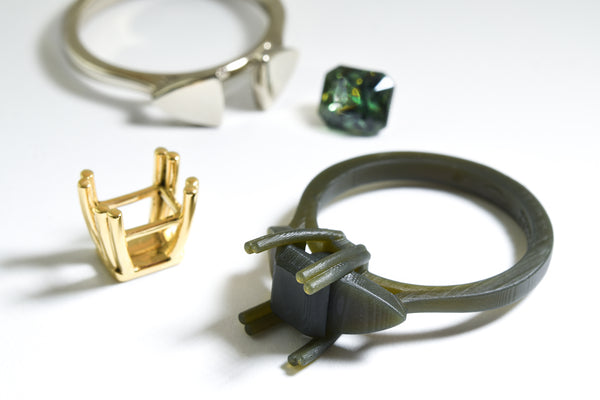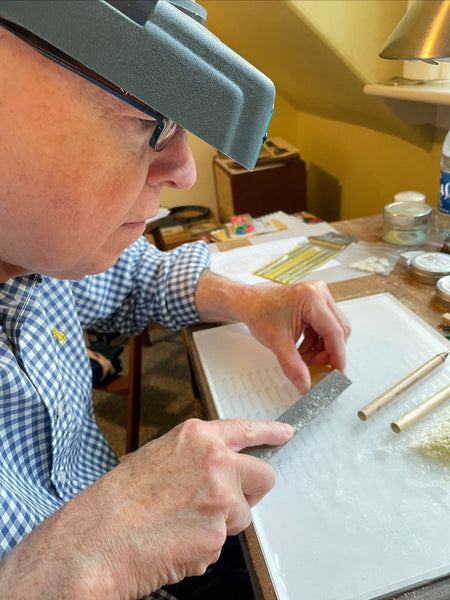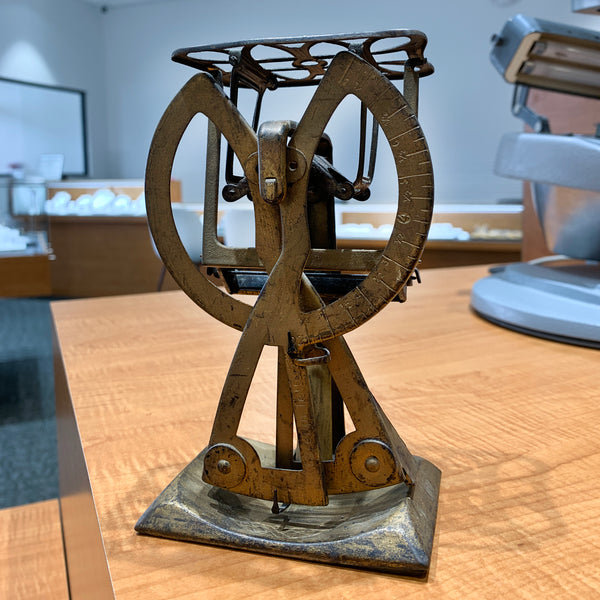Everything You Need to Know About June Birthstones
People with June birthdays have a range of gemstones to choose from: pearl, alexandrite, and moonstone. They are all fascinating, unusual gems with their own unique qualities. From the lustrous, organic pearl and the rare alexandrite to the mysterious moonstone, June’s birthstones are unique and meaningful. With a range of color options and price points, there is a gemstone to fit any budget or style. Let’s take a closer look at these three gorgeous June birthstones, and find out how to buy and care for them.

Pearls and Pearl Jewelry
Imagine finding a beautiful, lustrous pearl inside a living creature! Pearls have been treasured since they were discovered in ancient times. The ancient Egyptians were buried with pearls, and these gems were considered to be the ultimate symbol of high class and wealth in ancient Rome. Knights wore pearls into battle during the Dark Ages.
People thought pearls were tears of the gods or tears from mermaids. Some also believed they were dewdrops that fell from the moon and into the sea. For thousands of years, pearls have symbolized wealth, luck, and matrimony. They were held in high regard by the ancient Greeks for their association with love and marriage.
Up until the early 20th century, all pearls were formed naturally—until cultured pearls were introduced. Cultured pearls are created when a bit of shell or a bead is implanted inside a living oyster or mussel. The pearl grows around the nucleus until it is large enough to harvest.
The more perfectly round the pearl, the more valuable it is. In the past, before cultured pearls were available, it could take years to find matches to make a strand of pearls, or even a matched pair.
Type of Pearls
- Akoya Pearls—Traditional saltwater pearls from Japan. The rarest are perfectly round and blemish-free. Akoya pearls have natural colors that are white to gray, with silver, pink, or blue overtones.
- Freshwater Pearls—Grown in rivers and man-made lakes, mostly in China. The tiny, rice-like freshwater pearls of the past are now plump and lustrous. Very high-quality freshwater pearls rival the beauty of saltwater pearls. Generally, they cost less.
- Tahitian Pearls—The only naturally “black pearls.” In actuality, they are bluish, greenish, purplish, or silvery. Their beautiful surface can appear almost metallic with a sheen of color. These pearls are only found in the sea around Tahiti.
- South Sea Pearls—Large, white, silvery, or golden pearls. These gorgeous pearls are rare and difficult to cultivate, making them more costly than other types.
Tips for Buying and Wearing Pearls
The availability of freshwater pearls has made pearl jewelry more affordable. Natural colors such as pale pink, gray, or peach, and dyed colors of all varieties offer a wide choice. When buying a strand of pearls, check to see that the pearls are well-matched as far as color, size, and roundness. Pearls that are not round are known as baroque pearls, and they offer a uniquely imperfect and interesting look.
Pearl necklaces, rings, and other jewelry can be simple pieces that showcase pearls by themselves. Pearl jewelry can also be embellished with other gems or diamonds. Freshwater pearls set in sterling silver are lovely, affordable pieces. If you’re choosing a silver setting, make sure it is plated with rhodium so that it will not tarnish.
A strand of pearls should be knotted between each pearl to separate them and avoid rubbing. Knotting between each pearl also ensures that you won’t lose any of the gems if the strand happens to break.
Clasps come in an amazing variety—gold, silver, plain, or embellished with gemstones or more pearls. Some clasps are pretty enough to wear at the side or front of the strand. You can also buy a strand of pearls and have them restrung with a special clasp of your own choice.
A fun thing about a strand of pearls is that it can always be redesigned! Make a long strand into a short one, and have a bracelet besides. Or, restyle a pearl bracelet into a “station” necklace, where the pearls are spaced along a chain.
Caring for Pearls
- The surface of a pearl requires no polishing. It reflects light with a soft glow that looks beautiful when worn against the skin.
- Put your pearls on after applying all makeup and/or hairspray. You can gently wipe them with a soft cloth after wearing to keep them clean.
- Store pearl jewelry in a soft pouch or lined jewelry box, not touching other jewelry, to avoid scratching.
- Don’t seal your pearls in a plastic bag.
- As you can imagine, pearls are more delicate than most gems. Wear pearl rings and bracelets with care—avoid wearing them to do heavy work or exposing them to chemicals.

Alexandrite Jewelry
Alexandrite is a rare, unusual gemstone that is sometimes more costly than rubies and diamonds. Associated with balance and good fortune, the gem is said to inspire creativity and imagination. While many birthstones have been worn and loved since ancient times, alexandrite is a newcomer to the gemstone world. It was first discovered in the emerald mines of Russia’s Ural mountains in 1834. Alexandrite’s red and green colors matched the Russian military colors, and it became the official gemstone of Imperial Russia’s Tsardom.
The gem material from Russia was top-quality and spectacular in color. The supply was exhausted in the early 1900’s until the 1980’s when vibrant alexandrite was discovered in Brazil. Today, alexandrite also comes from Sri Lanka and East Africa. The gems being mined today are beautiful, but not as vibrant as the Russian material.
Alexandrite was first mistaken for emerald by its Finnish discoverers before its changing colors were realized. Alexandrite changes color from bluish-green in daylight to purplish-red in incandescent light. The very finest gems show a color change from green to red.
Tips for Buying and Wearing Alexandrite Jewelry
As you might expect, gems such as alexandrite that have the most dramatic color change are the most expensive. Natural gems of this caliber are almost unaffordable to the general public. Alexandrite is cut into different shapes, and the faceting is a combination of brilliant cutting on the crown (top) of the gemstone, with step-cut faceting on the pavilion (lower half of the gem). This combination of facet styles shows off the change of color.
Synthetic alexandrite created in a laboratory is also very expensive. Today, alexandrite in many jewelry pieces is simulated. Described as an emerald by day and a ruby by night, alexandrite transitions from day to night, making it a versatile gemstone to have in your collection.
Caring for Alexandrite
- At 8.5 on the Mohs Scale of Hardness, alexandrite is among the hardest precious gemstones, making it suitable for daily wear.
- Use a soft cloth to polish your alexandrite jewelry to remove any dust or residue that can affect its luster.
- Ultrasonic cleaners are safe for alexandrite. Or you can use soap and warm water to wash your pieces. Avoid exposing them to harsh chemicals.
- Wrap your alexandrite jewelry into a soft cloth before storing. Don’t store it with other less-durable gemstones as they may easily be scratched by alexandrite’s hardness.

Moonstone
Moonstone is every bit as beautiful, mysterious, and interesting as June’s other two birthstones. Moonstone—also called hecatolite—has been adored since ancient times. Known as a “dream stone,” it has always been prized for its power to bring beautiful dreams to its wearer.
The ancient Romans greatly admired moonstone, and believed that it was formed from moonbeams. They also believed that the gem’s shimmery appearance changed according to the phases of the moon, hence its name. Moonstone was also treasured as a source of feminine energy, and is believed to bring peace and balance when worn.
Most moonstone is cut with a high-domed cabochon shape to show its adularescence (the optical phenomenon that causes the extraordinary glow on the surface of moonstone) across the surface. Some lower quality moonstone is faceted, and it still boasts an appealing glow. The most dramatic moonstone has a colorless base, and true blue “moon” is from Sri Lanka. Other moonstone color tones are yellow, gray, blue, green, peach, and pink. Today, these other colors of moonstone come from India and other countries, including the United States.
Tips for Buying and Wearing Moonstone Jewelry
Moonstones with a more dramatic glow are the most expensive. Colors in brown to yellow tones are more affordable, and they have a gorgeous glow of their own. Moonstone is widely available set in silver or gold jewelry. There is no synthetic moonstone; however, there is a range of affordable quality in moonstone. If you love estate and antique jewelry sales, you may find fine moonstones set in vintage jewelry, sometimes combined with other colorful gemstones.
Moonstones can be worked into various styles of jewelry, and are a favorite gemstone for boho style jewelry. Moonstone rings are best for occasional wear since the gem is not hard. Earrings and pendants can be safely worn every day.
Caring for Moonstone
- Moonstone is prone to stress cracking due to its relatively low hardness. Store your moonstone jewelry in a soft pouch or lined box, and separate it from other pieces to avoid scratching.
- Remove moonstone jewelry before doing outdoor chores or housework.
- To clean earrings and other moonstone jewelry, gently rub in warm water with a little dish detergent, rinse well, and dry.
- Avoid storing or wearing your moonstone jewelry in direct sunlight.
- Some people like to “charge” their moonstone by exposing it to moonlight.
Plante Jewelers offers a stunning selection of pearl, alexandrite, and moonstone jewelry. We can help you choose or create the perfect piece for your lifestyle. Visit our store in Swansea to check out our collections, or create your own personalized designs.
3 Responses
Ohhhdear
Actually, there is a synthetic moonstone called “opalite”, which is actually Glass with a moonstone-like sheen. It’s fairly easy to tel it from true moonstone as it’s very consistent, and bargain priced.
Martha Jones
I never knew about the quality and care of these gems. Thank you.
Sally Bellerue
Your article on June stones is fabulous!
Leave a comment
Comments will be approved before showing up.






Nancy Plante
Author